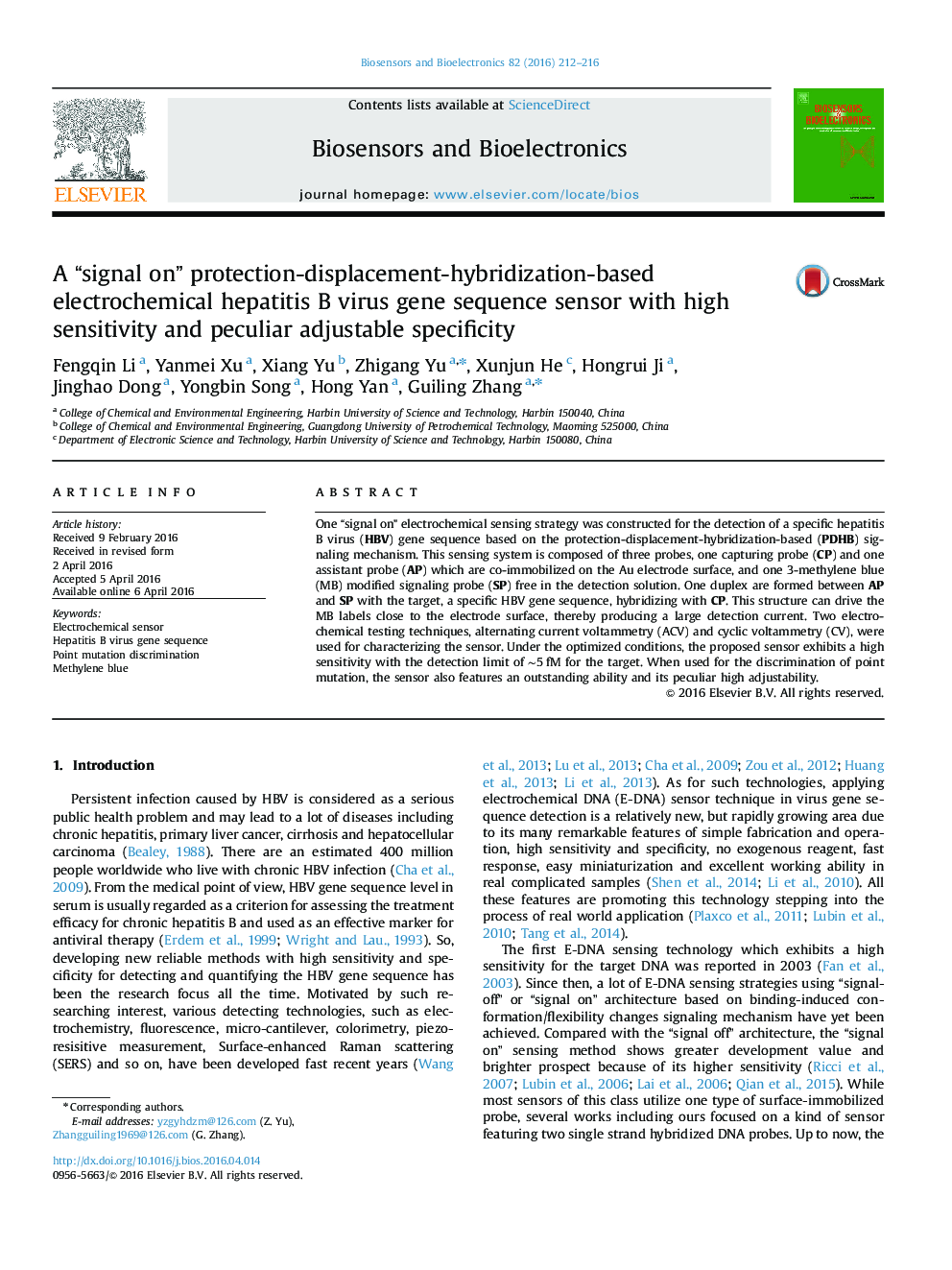| Article ID | Journal | Published Year | Pages | File Type |
|---|---|---|---|---|
| 866286 | Biosensors and Bioelectronics | 2016 | 5 Pages |
•This versatile sensing method was developed for the detection of a specific hepatitis B virus (HBV) gene sequence.•The proposed sensor features a high sensitivity for the target with a low detection limit of ∼5 fM.•The proposed sensor features a high specificity with the excellent adjustability.•The proposed sensor exhibits a good working ability in real HBV gene sequence existing system, the serum.
One “signal on” electrochemical sensing strategy was constructed for the detection of a specific hepatitis B virus (HBV) gene sequence based on the protection-displacement-hybridization-based (PDHB) signaling mechanism. This sensing system is composed of three probes, one capturing probe (CP) and one assistant probe (AP) which are co-immobilized on the Au electrode surface, and one 3-methylene blue (MB) modified signaling probe (SP) free in the detection solution. One duplex are formed between AP and SP with the target, a specific HBV gene sequence, hybridizing with CP. This structure can drive the MB labels close to the electrode surface, thereby producing a large detection current. Two electrochemical testing techniques, alternating current voltammetry (ACV) and cyclic voltammetry (CV), were used for characterizing the sensor. Under the optimized conditions, the proposed sensor exhibits a high sensitivity with the detection limit of ∼5 fM for the target. When used for the discrimination of point mutation, the sensor also features an outstanding ability and its peculiar high adjustability.
